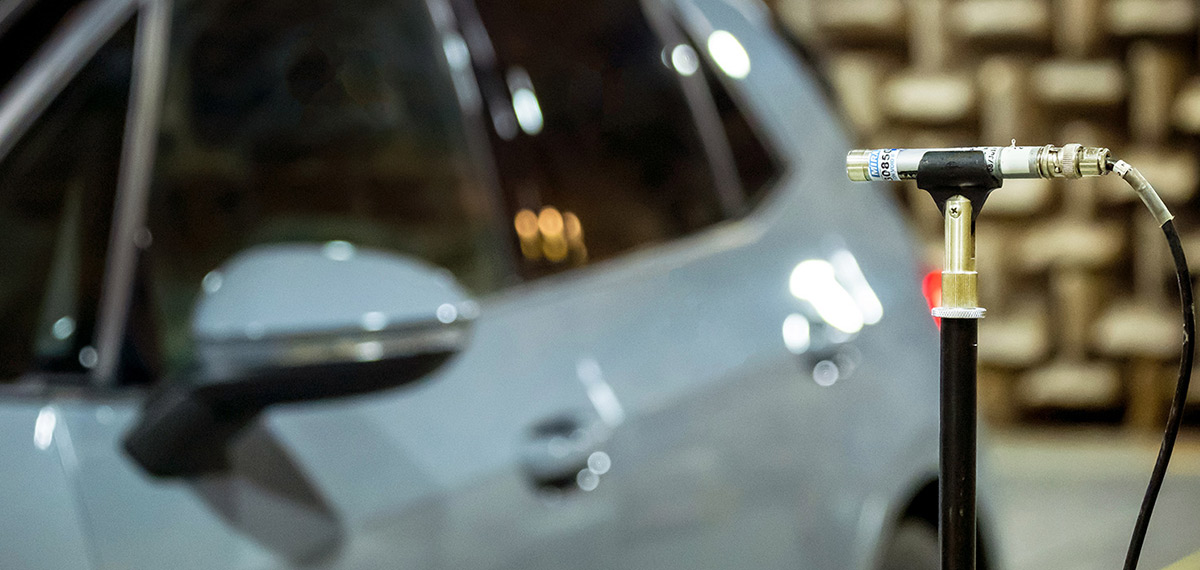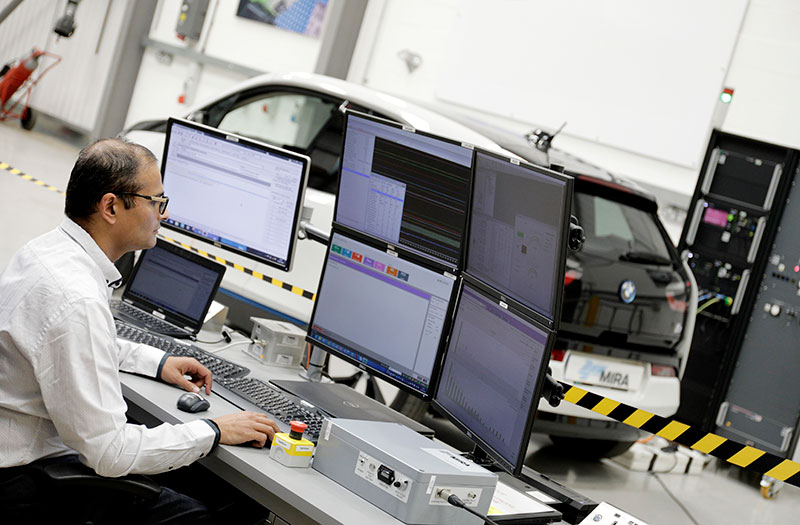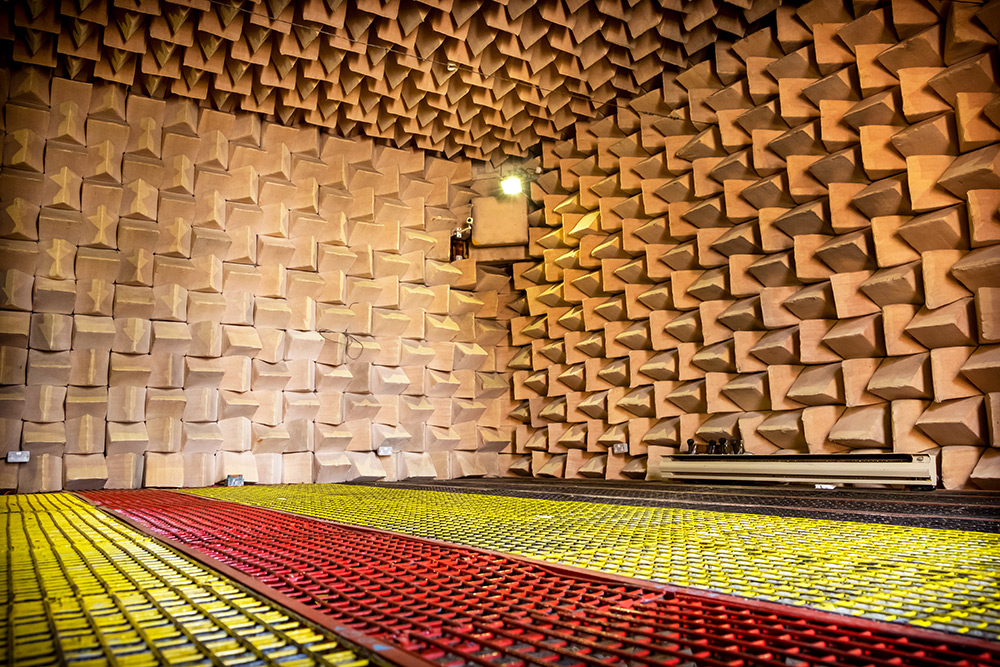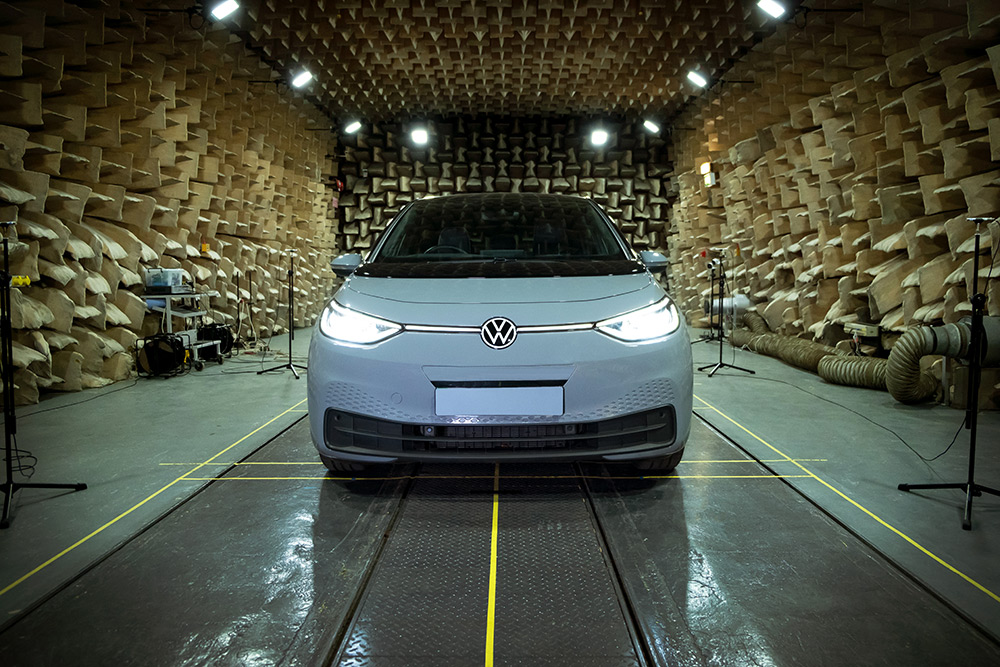NVH stands for Noise, Vibration, and Harshness, and NVH testing for automotive vehicles focuses on evaluating and mitigating undesirable noise, vibration, and harshness characteristics.
These tests help ensure a comfortable and quiet driving experience for passengers.
NVH testing aims to achieve a balance between comfort, performance, and safety, ensuring that vehicles provide a pleasant and enjoyable driving experience while meeting industry standards and customer expectations.

Here are the main types of NVH testing for automotive vehicles:
Noise Testing
- Interior Noise: Measures the noise levels inside the vehicle cabin under various driving conditions. Different sources of noise, such as engine, road, wind, and HVAC systems, are assessed.
- Exterior Noise: Evaluates the noise emitted by the vehicle to the external environment. It includes measurements of pass-by noise and stationary noise levels.
Vibration Testing
- Whole-Body Vibration: Analyses the vibrations transmitted through the vehicle’s chassis to the occupants. These vibrations can originate from engine, road, suspension, and drivetrain components.
- Hand-Arm Vibration: Focuses on vibrations transmitted to the driver and occupants through the steering wheel and controls.
Harshness Testing
- Ride Harshness: Assesses the discomfort experienced by passengers due to road-induced vibrations and impacts. It involves evaluating how well the suspension system isolates the vehicle from road irregularities.
- Engine Noise and Vibration Harshness (NVH): Evaluates the noise and vibrations generated by the engine, including assessing engine mounts, exhaust systems, and ancillary components.
Modal Analysis
- Identifies the natural resonant frequencies and mode shapes of vehicle components and systems. This analysis helps engineers optimize designs to avoid resonance-related issues.
Sound Quality Analysis
- Focuses on the perception of sound by occupants. It involves subjective assessments of sound characteristics, such as pitch, loudness, and tonal quality, to create a pleasing auditory experience.
Acoustic Material Testing
- Evaluates the effectiveness of sound-absorbing and sound-blocking materials used in the vehicle’s construction. This testing helps engineers select and position materials to minimize unwanted noise.
Wind Noise Testing
- Measures and analyses the noise generated by air turbulence and airflow around the vehicle, particularly at higher speeds. It helps optimize vehicle design to reduce wind noise.
Torsional Vibration Testing
- Assesses the torsional vibrations in drivetrain components, such as the engine and transmission. This testing helps optimize component design and minimise drivetrain related NVH issues.
Durability Testing
- Involves subjecting the vehicle to various road conditions and environmental factors to identify potential wear and degradation that could lead to increased NVH levels over time.
Speak to an Expert
If you would like to discuss your testing requirements with one of our experts, please send us a message and we will contact you as soon as possible.
Related Tests
NVH Testing
Book a Test
Our Customer Services Team are able to facilitate your booking and answer any questions you may have about our capabilities and facilities.
Our Customer Services Team are able to facilitate your booking and answer any questions you may have about our capabilities and facilities.
Test Details
No results found
Find a Test
Search by:
Applications
Vehicle type / industry
Business Area
Delivery Location
Find a Test



